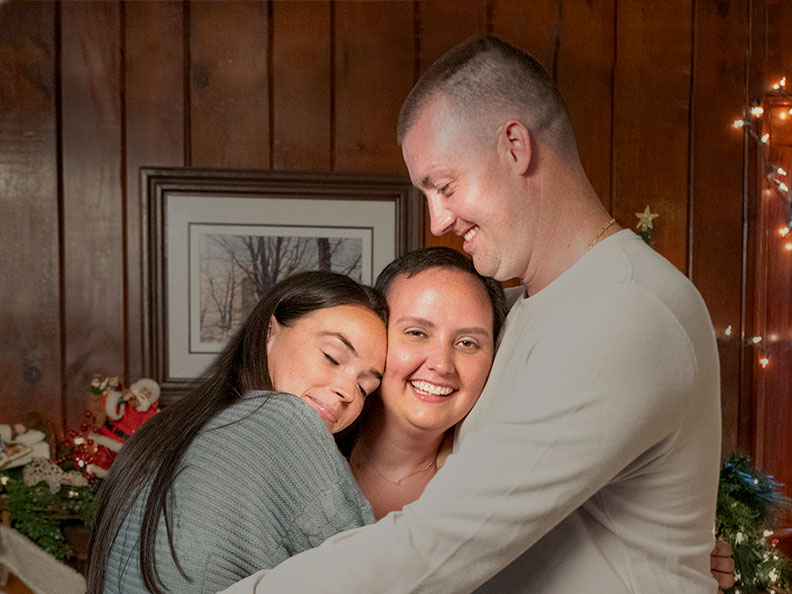Your gift is 100% tax deductible
Survival Rates by Risk Group for Neuroblastoma
Survival rates are a way to measure how many people survive a certain type of cancer over time. They cannot tell you exactly what will happen with any one person, but they may help give you a better understanding about how likely it is that treatment will be successful.
Survival rates in neuroblastoma are defined by the risk group of the tumor, which is a combination of the extent of the tumor and other prognostic factors that affect a child’s outlook. For more information, see Stages, Prognostic Markers, and Risk Groups for Neuroblastoma.
What is a 5-year survival rate?
The 5-year survival rate refers to the percentage of children who live at least 5 years after their cancer is diagnosed. Of course, many children live much longer than 5 years (and many are cured).
To get 5-year survival rates, doctors must look at children who were treated at least 5 years ago. Improvements in treatment since then may result in a better outlook for children being diagnosed with neuroblastoma today.
Survival by Children’s Oncology Group (COG) risk group
The COG (the major group of doctors who treat childhood cancer in the United States) risk group system uses the International Neuroblastoma Risk Group Staging System (INRGSS), along with the major prognostic factors. These are combined to place children into 1 of 3 risk groups:
- Low-risk group: Children in the low-risk group have a 5-year survival rate that is higher than 95%.
- Intermediate-risk group: Children in the intermediate-risk group have a 5-year survival rate around 95%.
- High-risk group: Children in the high-risk group have a 5-year survival rate around 60%.
While these risk groups provide an estimate of how well treatment may work, your doctor knows your child’s case the best. Talk with your treatment team about how these numbers may apply in your child’s situation.
- Written by
- References

Developed by the American Cancer Society medical and editorial content team with medical review and contribution by the American Society of Clinical Oncology (ASCO).
Dome JS, Rodriguez-Galindo C, Spunt SL, Santana VM. Chapter 92: Pediatric solid tumors. In: Neiderhuber JE, Armitage JO, Doroshow JH, Kastan MB, Tepper JE, eds. Abeloff’s Clinical Oncology. 6th ed. Philadelphia, PA. Elsevier; 2020.
Irwin MS, Naranjo A, Zhang FF, et al. Revised neuroblastoma risk classification system: A report from the Children’s Oncology Group. J Clin Oncol. 2021;39(29):3229-3241.
Liang WH, Federico SM, London WB, et al. Tailoring Therapy for Children With Neuroblastoma on the Basis of Risk Group Classification: Past, Present, and Future. JCO Clin Cancer Inform. 2020;4:895-905.
Monclair T, Brodeur GM, Ambros PF, et al. The International Neuroblastoma Risk Group (INRG) staging system: an INRG Task Force report. J Clin Oncol. 2009;27(2):298-303.
National Cancer Institute. Neuroblastoma Treatment (PDQ). 2024. Accessed at https://www.cancer.gov/types/neuroblastoma/hp/neuroblastoma-treatment-pdq on March 24, 2025.
Park JR, Hogarty MD, Bagatell R, et al. Chapter 23: Neuroblastoma. In: Blaney SM, Adamson PC, Helman LJ, eds. Pizzo and Poplack’s Principles and Practice of Pediatric Oncology. 8th ed. Philadelphia Pa: Lippincott Williams & Wilkins; 2021.
Pinto NR, Applebaum MA, Volchenboum SL, et al. Advances in risk classification and treatment strategies for neuroblastoma. J Clin Oncol. 2015: 30;3008-3017.
Shohet JM, Nuchtern JG, Foster JH. Treatment and prognosis of neuroblastoma. UpToDate. 2025. Accessed at https://www.uptodate.com/contents/treatment-and-prognosis-of-neuroblastoma on March 24, 2025.
Shohet JM, Nuchtern JG, Foster JH. Clinical presentation, diagnosis, and staging evaluation of neuroblastoma. UpToDate. 2025. Accessed at https://www.uptodate.com/contents/clinical-presentation-diagnosis-and-staging-evaluation-of-neuroblastoma on March 24, 2025.
Last Revised: June 26, 2025
American Cancer Society medical information is copyrighted material. For reprint requests, please see our Content Usage Policy.
American Cancer Society Emails
Sign up to stay up-to-date with news, valuable information, and ways to get involved with the American Cancer Society.



